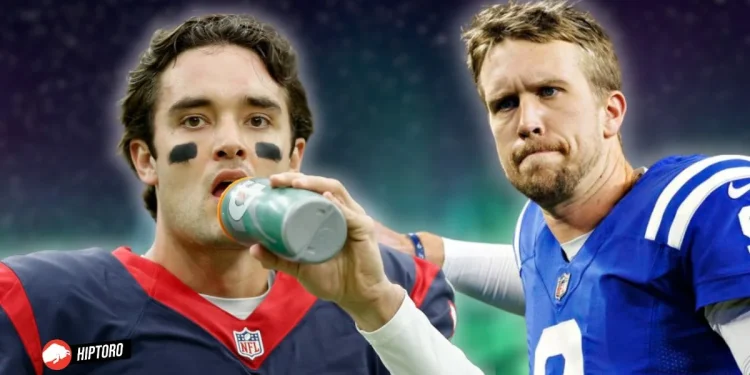The NFL offseason is always a fascinating period, filled with player trades, free-agent signings, and coaching changes that can dramatically reshape a team’s future. Every team aims to fortify their roster, uncover hidden gems, or make headline-grabbing moves to propel them to Super Bowl glory. However, not every transaction pans out as planned, and some offseason moves end up being costly missteps. These decisions might backfire due to poor player performance, injury issues, or unrealistic expectations. Let’s dive into the top 10 NFL offseason moves that backfired, analyzing why these decisions went wrong and their impact on the teams involved.
Top 10 NFL Offseason Moves That Backfired
1. Albert Haynesworth’s Contract (Washington Commanders):
The Washington Commanders’ 2009 signing of Albert Haynesworth remains one of the most infamous contracts in NFL history. Haynesworth, an imposing defensive tackle, had been an absolute force with the Tennessee Titans. His combination of size, strength, and agility made him a nightmare for opposing offenses, which earned him two consecutive All-Pro selections in 2007 and 2008. This resume led the Commanders to sign him to a record-breaking seven-year, $100 million deal, with $41 million guaranteed.
Almost immediately, the massive contract seemed ill-advised. Haynesworth arrived at Washington with the expectation that he would transform their defense. Instead, his tenure was marred by controversy and underperformance. A significant portion of the criticism stemmed from his lack of commitment to the team.
His off-season conditioning was subpar, and he struggled to adapt to the defensive scheme implemented by the coaching staff. Jim Zorn, the head coach at the time of the signing, was replaced by Mike Shanahan in 2010, and the new regime required Haynesworth to play nose tackle in a 3-4 scheme. This was a position he found unappealing, and he openly resisted the change.

Haynesworth’s inability to work within the new system resulted in confrontations with Shanahan, which culminated in his suspension for “conduct detrimental to the team.” The defensive tackle appeared in just 20 games over two seasons with the team, recording a meager 6.5 sacks. His lack of discipline, poor attitude, and conditioning problems made him more of a liability than an asset.
In July 2011, the Commanders finally managed to trade Haynesworth to the New England Patriots for a fifth-round draft pick, essentially giving away the once-dominant player they had signed for over $100 million. Haynesworth lasted just six games in New England before being cut, cementing his status as one of the league’s most notorious busts.
From a financial perspective, the deal became a cautionary tale of overcommitting to a player based on short-term success. The Commanders were forced to absorb substantial dead money on their salary cap due to Haynesworth’s guaranteed amount, limiting their flexibility in subsequent years. Moreover, his lack of production meant the team never got the intended return on investment, leaving a defensive void that persisted well after his departure.
The failure of the Haynesworth signing reshaped the Commanders’ approach to free agency and big contracts, serving as a stark reminder of the risks associated with massive investments in marquee free agents. The NFL as a whole also took note, becoming more cautious about offering record-breaking deals to players with perceived attitude or discipline issues. Haynesworth’s tenure in Washington remains a significant lesson in the unpredictable nature of free agency, emphasizing that even proven stars can falter in the wrong environment.
2. Brock Osweiler Trade (Houston Texans):
The Houston Texans’ acquisition of Brock Osweiler in 2016 remains one of the most perplexing transactions in NFL history. Osweiler, a backup for most of his career with the Denver Broncos, became a starter in 2015 when Peyton Manning was sidelined with an injury. His performance in a handful of starts was enough to convince the Texans to sign him to a four-year, $72 million deal, with $37 million guaranteed.
Despite his limited NFL experience, the Texans hoped Osweiler could stabilize their quarterback situation and lead them deep into the playoffs. However, the gamble quickly soured. Osweiler’s lack of consistency became evident as he struggled to grasp the Texans’ offense. His performance was plagued by inaccuracy, turnovers, and questionable decision-making. The quarterback completed just 59% of his passes in his lone season as the starter, throwing 16 touchdowns against 15 interceptions.

His inconsistency and inability to efficiently run the offense led head coach Bill O’Brien to bench him for backup Tom Savage late in the season. However, Savage’s injury meant Osweiler returned to the starting role for the playoffs. Despite a playoff victory against the Oakland Raiders, the Texans’ offense remained underwhelming, and they lost in the next round to the New England Patriots.
The Texans’ front office quickly realized their mistake. Osweiler’s hefty salary weighed heavily on their cap, and his mediocre performance made it challenging to find a trade partner. Eventually, they struck a deal with the Cleveland Browns, agreeing to include a second-round draft pick as a sweetener just to offload Osweiler’s $16 million salary. The Browns promptly released him after the preseason.
The Osweiler trade became a textbook example of why caution is necessary when signing unproven quarterbacks to lucrative contracts. The Texans’ cap hit due to Osweiler’s guaranteed money limited their ability to address other roster needs and forced them to pay a high price to correct their mistake. The failed experiment influenced future quarterback transactions, as teams grew more skeptical of investing heavily in players with limited sample sizes.
The ordeal showcased the critical importance of a well-defined organizational strategy. The Texans’ lack of alignment between coaching and front office staff meant that Osweiler’s skill set wasn’t properly evaluated within the framework of the team’s offensive scheme. Ultimately, the Texans learned valuable lessons in team management and roster construction, moving forward with a more calculated approach to player acquisitions.
3. Le’Veon Bell Signing (New York Jets):
The New York Jets’ 2019 signing of running back Le’Veon Bell was intended to rejuvenate their offense. Bell, one of the league’s most dynamic running backs with the Pittsburgh Steelers, had an impressive record of versatility, combining excellent rushing ability with strong pass-catching skills. However, after sitting out the entire 2018 season due to a contract dispute, Bell signed a four-year, $52.5 million deal with the Jets.
The expectation was that Bell would be a transformative addition, capable of bolstering the Jets’ offensive game plan while providing young quarterback Sam Darnold with a reliable weapon. Unfortunately, the results were disappointing. The offensive line’s subpar performance left Bell with little room to maneuver, and he couldn’t replicate his previous productivity. He finished the season with just 789 rushing yards, the lowest in his career for a full season.
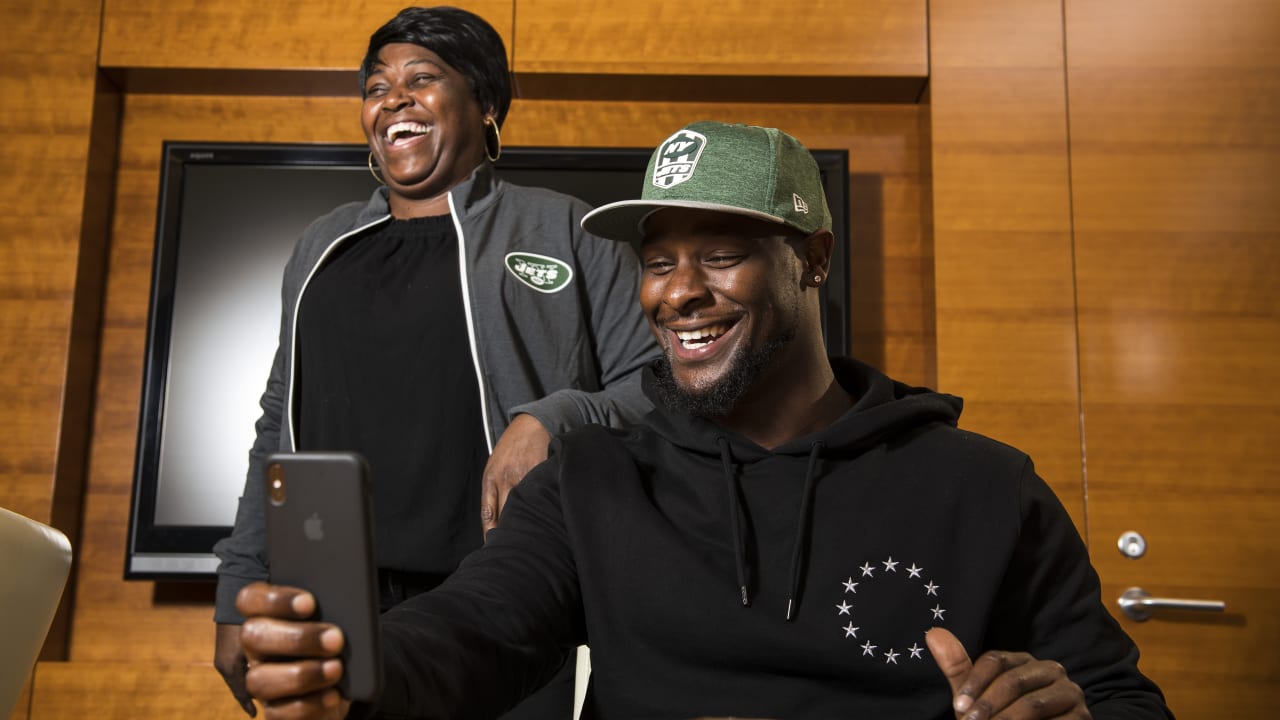
Compounding the issue was head coach Adam Gase’s apparent disapproval of the signing, which created a disconnect in utilizing Bell effectively. The offense struggled to integrate Bell’s skill set into their scheme, leading to frustration and mounting criticism. The relationship between Bell and Gase deteriorated, and the running back became increasingly vocal about his dissatisfaction.
In his second season, Bell’s production continued to decline, and the Jets eventually released him in October 2020. The team absorbed over $15 million in dead money over two seasons for a player who never lived up to expectations. Meanwhile, the Jets were left without a consistent running threat and remained offensively challenged throughout the season.
Bell’s tenure with the Jets highlighted the risks associated with big-money contracts for running backs, particularly those with high usage and a history of injuries. His struggles underscored the importance of offensive line play and offensive scheme fit for a running back’s success. Additionally, the organizational discord between the front office and coaching staff made it evident that a unified vision is crucial for ensuring that such significant signings thrive.
Ultimately, Bell’s disappointing stint in New York stands as a cautionary tale for teams investing heavily in free-agent running backs, emphasizing the need to consider long-term durability, offensive scheme compatibility, and alignment within the organization before committing to such contracts.
4. DeAndre Hopkins Trade (Houston Texans):
In a move that shocked the NFL world, the Houston Texans traded All-Pro wide receiver DeAndre Hopkins to the Arizona Cardinals in 2020. The deal sent Hopkins and a fourth-round pick to Arizona in exchange for running back David Johnson, a second-round pick, and a future fourth-rounder. The trade was heavily criticized due to the perceived imbalance in value and the Texans’ failure to secure more draft capital for one of the league’s top wide receivers.
Hopkins had been a cornerstone of the Texans’ offense, with five 1,000-yard seasons to his name. His ability to make contested catches and outmaneuver defenders made him quarterback Deshaun Watson’s primary target. Despite this, head coach Bill O’Brien, also acting as general manager, cited financial considerations and a desire to move on from Hopkins as the key reasons for the trade.

The Texans’ offense struggled mightily without Hopkins, lacking a reliable playmaker to elevate the passing game. Watson often appeared stranded without a dependable target, and Johnson’s performance at running back failed to meet expectations. Johnson, plagued by injuries in prior seasons, couldn’t replicate the production that once made him an elite back, further deepening the Texans’ offensive woes.
Meanwhile, Hopkins thrived in Arizona, instantly connecting with quarterback Kyler Murray to form a dynamic partnership. He recorded 1,407 receiving yards in his first season with the Cardinals, helping them compete in a tough NFC West division and justifying his place among the league’s elite wide receivers. The difference in impact between Hopkins and Johnson was stark, and the trade became emblematic of O’Brien’s questionable roster management.
O’Brien’s tenure ended shortly after the 2020 season began, with the Hopkins trade playing a significant role in his dismissal. The Texans were left in disarray, facing a massive rebuild and lacking the draft capital necessary to replenish the roster effectively. The Hopkins trade serves as a reminder of how critical it is to maintain strong relationships with star players and thoroughly evaluate their importance to the team’s on-field success.
The move underscored the challenges of balancing salary demands with roster construction, but ultimately, the Texans failed to appropriately replace Hopkins’ value. Future decision-makers will likely take this trade as a lesson in maximizing returns and not undervaluing proven talent for short-term financial relief.
5. Antonio Brown Trade (Oakland Raiders):
The Oakland Raiders’ acquisition of wide receiver Antonio Brown in 2019 was meant to inject offensive firepower into the team’s passing game. After several highly productive seasons with the Pittsburgh Steelers, Brown was widely regarded as one of the league’s top receivers. The Raiders acquired him in exchange for third and fifth-round draft picks, expecting him to provide a major boost to their offense.
However, the honeymoon period was incredibly brief. Brown’s tenure with the Raiders was riddled with off-field controversies, starting with a helmet dispute that led him to file a grievance against the NFL. He also suffered frostbite on his feet due to a cryotherapy mishap, which limited his participation in practice. Despite assurances that he would return to the team fully committed, Brown repeatedly clashed with management and head coach Jon Gruden.
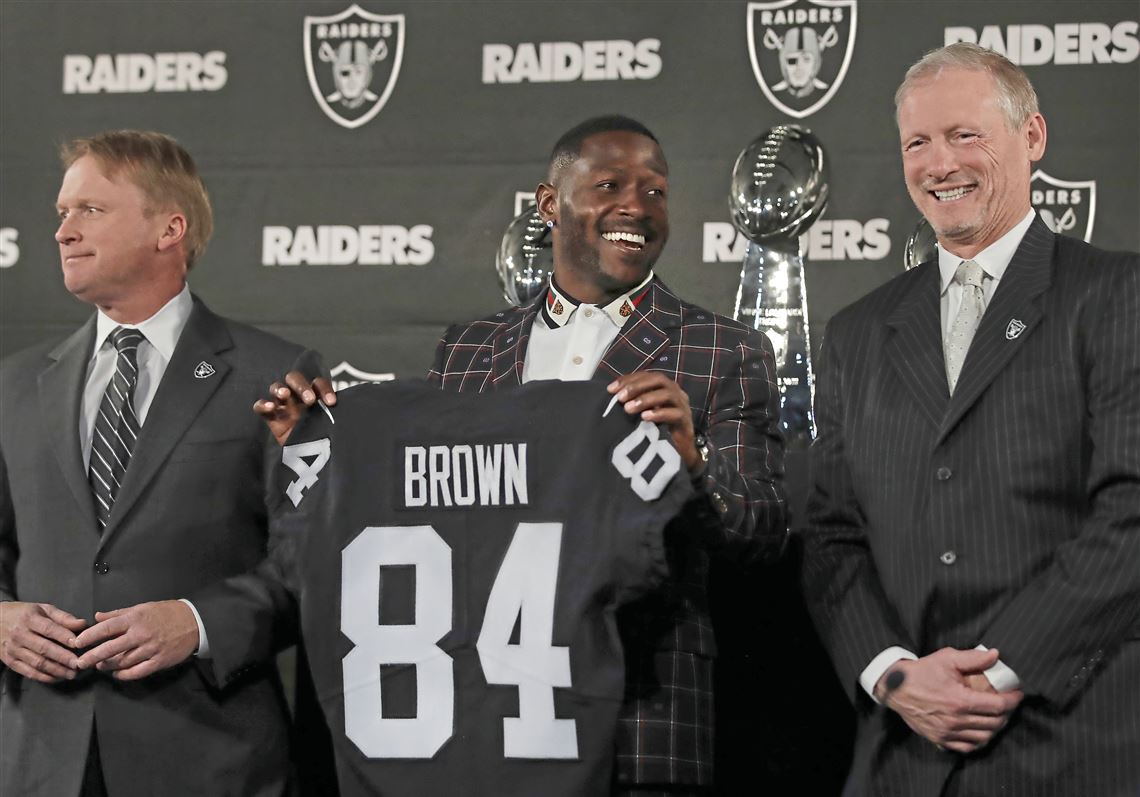
The situation escalated when Brown got into a heated argument with general manager Mike Mayock and was fined for conduct detrimental to the team. Following a public apology, he requested his release via social media after another altercation over the fines levied against him. The Raiders ultimately granted his wish, terminating his contract before he ever played a regular-season game.
The failed Brown trade left the Raiders with a void in their receiving corps that could not be filled immediately, and they lacked the draft capital or available talent to compensate for his absence. Brown’s behavior underscored the importance of thorough background checks and risk assessments before bringing in high-profile players. The Raiders’ front office was criticized for not anticipating the issues that eventually led to Brown’s exit.
Despite the potential for greatness, Brown’s unpredictability ultimately proved too volatile for the Raiders to manage. His brief tenure serves as a cautionary tale about ignoring red flags and highlights the importance of ensuring that new acquisitions align with the team’s culture and values. The Raiders’ inability to foresee or manage Brown’s antics left them scrambling offensively, revealing the fragility of relying on a single marquee player.
6. Nick Foles Signing (Jacksonville Jaguars):
Nick Foles became a household name after his miraculous run with the Philadelphia Eagles in 2017, leading them to a Super Bowl victory as a backup. His performance earned him a lucrative four-year, $88 million contract with the Jacksonville Jaguars in 2019, as they hoped he would be the answer to their quarterback problems.
Expectations were high for Foles, but his tenure in Jacksonville was derailed almost immediately. In his first regular-season game, Foles suffered a broken clavicle, sidelining him for the majority of the season. In his absence, rookie quarterback Gardner Minshew performed admirably, creating a quarterback controversy upon Foles’ return.
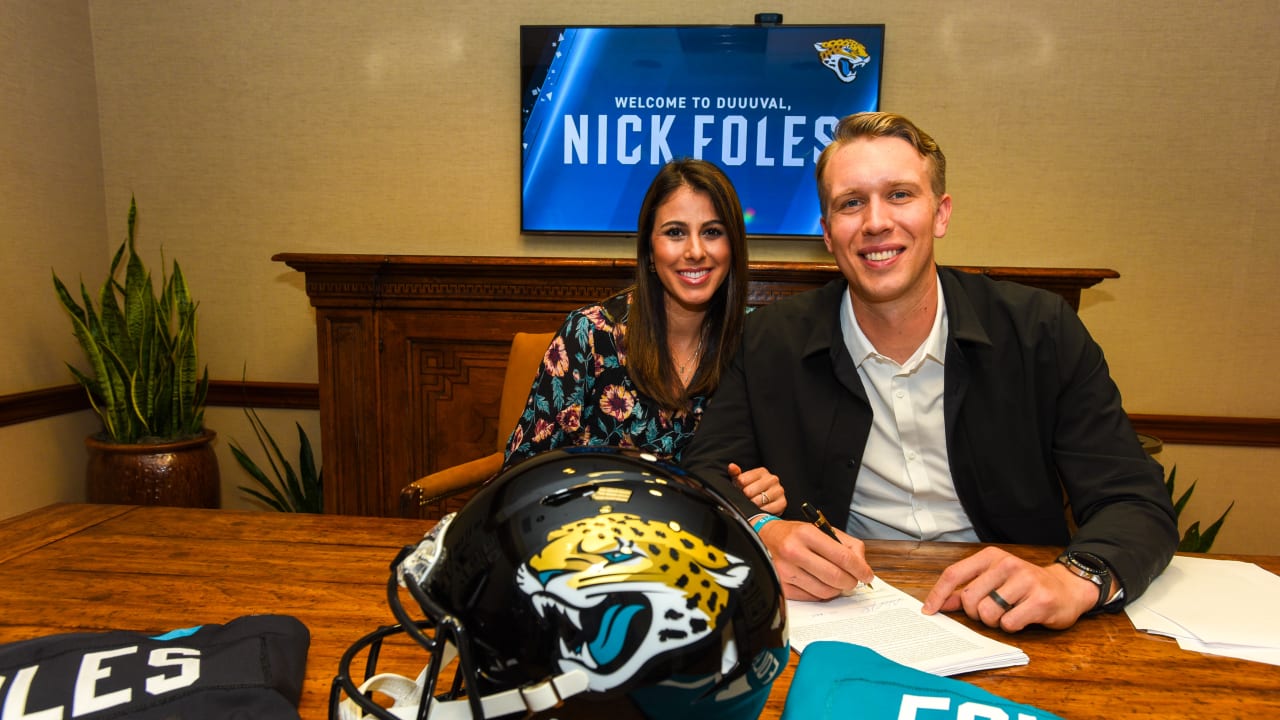
When Foles did regain his starting position, he looked far from the quarterback who had achieved Super Bowl glory. He struggled with accuracy, pocket presence, and decision-making, leading to an offense that was unable to find rhythm. After just a handful of starts, Foles was benched again in favor of Minshew, sealing the perception that the Jaguars had made a costly mistake.
Unable to justify his significant salary, the Jaguars traded Foles to the Chicago Bears in 2020 for a late-round draft pick, taking a major cap hit in the process. The decision to sign Foles became a lesson in the inherent risks of paying a premium for quarterbacks who had succeeded in limited samples or specific systems. The Jaguars failed to assess whether their offensive scheme suited Foles’ strengths and were left with an ineffective offense and a depleted cap situation.
Ultimately, the Foles experiment highlighted the importance of comprehensive scouting and roster management. It demonstrated that a single high-profile free-agent signing is not a quick fix and that significant investments must be accompanied by a holistic strategy that considers team fit, system compatibility, and contingency plans.
7. Jared Goff Extension (Los Angeles Rams):
Jared Goff seemed like a safe bet for the Los Angeles Rams after leading them to a Super Bowl appearance following the 2018 season. His performance that year had been impressive, showing significant growth under head coach Sean McVay’s innovative offensive system. In 2019, the Rams rewarded him with a four-year, $134 million contract extension, locking him in as their franchise quarterback.
However, after signing the extension, Goff’s performance declined. His decision-making regressed, and he struggled to find consistency, often appearing overwhelmed in critical situations. His completion percentage dipped, turnovers increased, and he failed to elevate the offense when it mattered most.
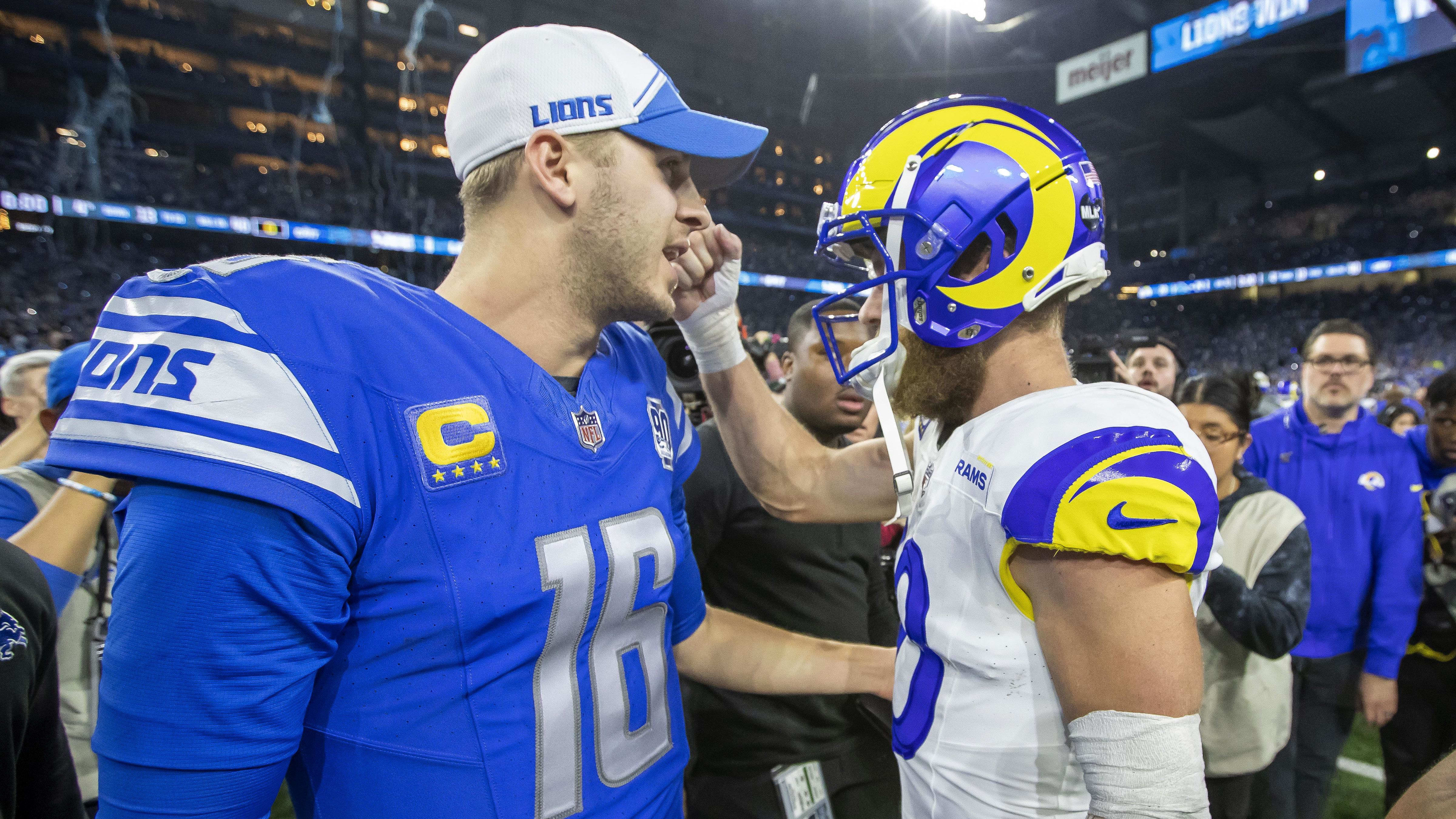
The Rams remained competitive but were clearly limited by Goff’s shortcomings. His struggles with progressions and pocket presence led to errant throws and costly turnovers, while McVay’s offense appeared increasingly predictable. The pressure of the large contract became apparent, and the Rams were criticized for committing too early.
The team’s dissatisfaction with Goff culminated in a blockbuster trade with the Detroit Lions in 2021, where they swapped Goff for Matthew Stafford while also surrendering multiple first-round picks. The trade signaled the Rams’ acknowledgment that they needed an upgrade at quarterback to fully realize their offensive potential.
Goff’s extension serves as a lesson in ensuring sustained performance before committing long-term to a young quarterback. The Rams overestimated his growth trajectory and underestimated the risks of his limited mobility and decision-making. Their cap situation was also affected, with Goff’s dead money limiting flexibility even after the trade.
Despite Goff’s promise early in his career, his struggles following the extension underscore the complexity of quarterback evaluation and the significant consequences of overcommitting to unproven talent.
8. Josh Norman Signing (Washington Commanders):
In 2016, cornerback Josh Norman signed a five-year, $75 million contract with the Washington Commanders after his All-Pro season with the Carolina Panthers. Norman had established himself as a top shutdown corner and was expected to anchor the Commanders’ secondary for years to come.
However, Norman’s success in Carolina was largely due to their defensive scheme, which relied on a dominant front seven and a zone coverage system that perfectly suited his skill set. In Washington, he was required to play more man-to-man coverage, which exposed his lack of elite speed and agility. Opposing quarterbacks quickly learned to exploit these weaknesses, targeting him in key matchups.
/cdn.vox-cdn.com/uploads/chorus_asset/file/19778685/usa_today_13615675.jpg)
Norman’s performance deteriorated rapidly as he struggled to keep up with quicker receivers, and his physical play often led to costly penalties. His fiery temperament, once seen as a positive attribute, became a liability when it resulted in unnecessary confrontations and ejections.
By 2019, the Commanders had seen enough. Norman’s poor performance combined with his high salary made him expendable, and he was released before the final year of his contract. His tenure became a case study in how a player’s previous success in one system doesn’t always translate to a different environment.
The Commanders’ failure to assess Norman’s fit in their defensive scheme and the hefty financial commitment backfired spectacularly. The move serves as a reminder of the need for thorough scouting and a clear understanding of how a new acquisition will adapt to a different role.
9. Nnamdi Asomugha Signing (Philadelphia Eagles):
In 2011, the Philadelphia Eagles pursued an ambitious offseason strategy to build a “Dream Team” roster. Central to this was signing Nnamdi Asomugha, who was widely regarded as one of the league’s premier cornerbacks. He signed a five-year, $60 million deal after earning All-Pro honors with the Oakland Raiders.
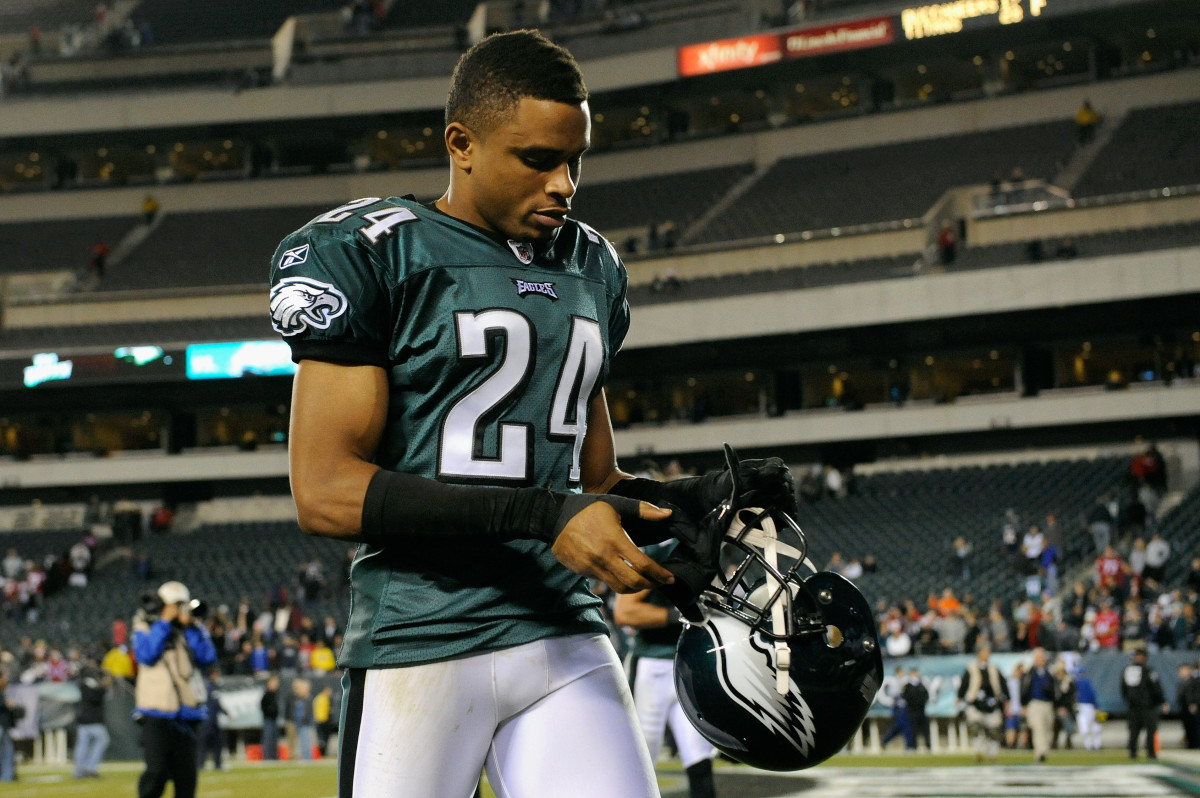
However, the Eagles quickly realized that Asomugha was not a perfect fit for their defensive scheme. He had excelled in a press-man system in Oakland, but the Eagles primarily ran zone coverage under their new defensive coordinator. This adjustment proved disastrous, as Asomugha struggled to adapt to a new role and was repeatedly exploited by opposing offenses.
His inability to deliver on his lofty contract, coupled with other signings that underperformed, led to the Eagles missing the playoffs in 2011 and 2012. The “Dream Team” quickly became a nightmare, with Asomugha being released after just two seasons.
Asomugha’s tenure in Philadelphia highlighted the importance of scheme fit and emphasized that even the most talented players can struggle when placed in an incompatible system. His struggles also showcased the dangers of relying on splashy free-agent signings without a coherent vision of how to integrate them into the existing team.
10. Trent Richardson Trade (Indianapolis Colts):
The Indianapolis Colts’ acquisition of Trent Richardson from the Cleveland Browns in 2013 is one of the most infamous trades in recent memory. The Colts traded a first-round pick for Richardson, who had been selected third overall just a year earlier and was expected to be a franchise-changing running back.
Despite his high draft status and promise, Richardson had struggled with inefficiency and decision-making. The Browns were willing to part ways with him, and the Colts saw an opportunity to add a workhorse running back to complement Andrew Luck’s passing game.
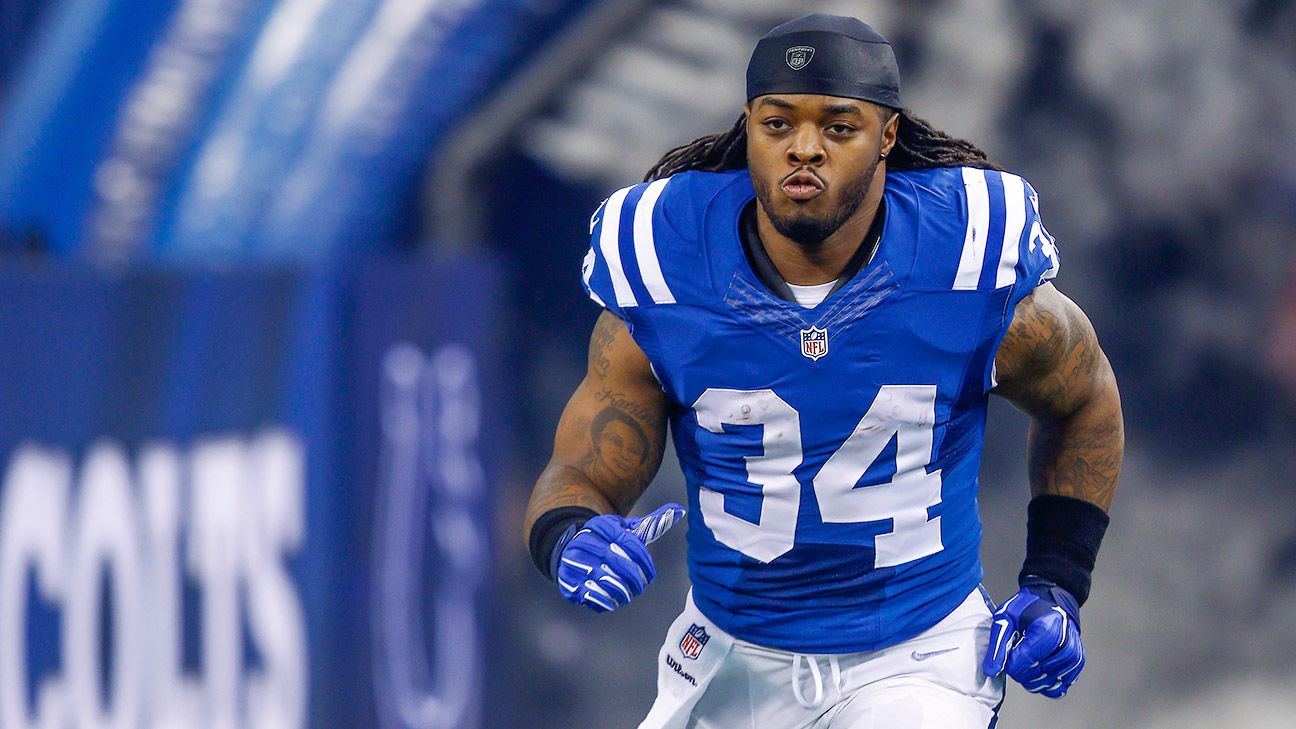
However, Richardson’s struggles persisted. He averaged a meager 2.9 yards per carry in his first season with the Colts and found it difficult to find gaps, often hesitating behind the line of scrimmage. His inability to generate explosive plays or consistently gain positive yardage led to diminishing carries and reduced playing time.
By 2015, Richardson was out of the NFL entirely, leaving the Colts with nothing to show for their first-round pick. The Browns used the pick to draft Johnny Manziel, another infamous bust, but the Richardson trade remains a cautionary tale of overvaluing draft pedigree and ignoring on-field performance.
The Colts’ decision highlighted the risks of investing heavily in running backs, particularly those who had not proven themselves consistently at the professional level. Their attempt to reinforce the offense with Richardson backfired and demonstrated that a player’s draft position does not guarantee future success.
These nine cases further illustrate that even the most carefully planned NFL moves can have unforeseen consequences. Whether due to performance, injuries, or system incompatibility, each of these transactions provides valuable lessons in how teams approach player evaluation and team building in the league’s ever-evolving landscape.


